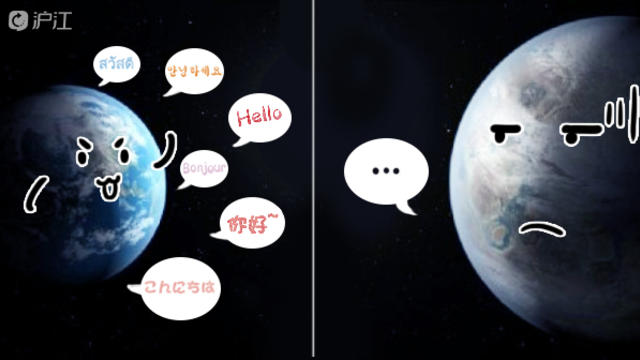英语四级暑期听力练习1
听力是四级考试中的重要题型,考生对这部分的复习一定不能松懈,考生可以充分利用暑期时间坚持练习听力,下面是一篇英语四级听力练习,快来练练吧。
An area known as a dead zone develops every spring in the Gulf of Mexico near the mouth of the Mississippi River. It can spread as much as 13,600 square kilometers, extending all the way to the eastern Texas coast. Scientists know what causes the dead zone -- too much nitrogen, but the solution might be hard to accept.
Bayani Cardenas is a professor of water studies at the University of Texas at Austin. He says the movement of rivers usually removes material like nitrates. So he wondered why that natural filtration process does not remove nitrates from the Mississippi River.
Dead pogies float in a fish kill in a pass near Bay Joe Wise on the Louisiana coast, Thursday, Sept. 16, 2010.
Professor Cardenas says his recent study shows that more than 99 percent of the river's water does pass through the river's sediment which is on the shore or bottom of the river. But he says the study found that there is so much nitrogen in the river system that is simply can not filter all of it.
The water that has nitrogen still in it supports the growth of algae. As the algae dies, it sinks to the bottom of the river where it breaks down or decomposes. It then takes oxygen from the water. This condition is called hypoxia and it is deadly to fish and shrimp.
Where does all this nitrogen come from? The answer is farms. The Mississippi River system carries water from 33 American states and part of Canada to the gulf of Mexico. Along the way nitrogen and other chemicals used in farming enter the system. Farmers say these chemicals must be used to produce enough food for a growing world population.
Aaron Packman is a professor of Civil and Environmental Engineering at Northwestern University. He says farmers may be able to better control the amount of nitrate fertilizer they put on fields.
"How much fertilizer do you need to give you good yields and then how much is maybe a marginal gain from adding lots more fertilizer? There is really a question here: can you maybe [reduce the amount] and get close to the same level of yield without having such a negative impact?" said Packman.
The water in the Mississippi River system should be able to clean itself naturally as it flows down stream. But flood controls and other human-made structures have hurt this filtering process.
Storms in the next few month will mix the gulf water and the dead zone will disappear, but it will return next year. And scientists say it will grow larger in years to come, if something is not done to reduce the amount of nitrogen in the Mississippi River.
全面掌握四六级考试信息,为备考复习做准备!
什么人能考四六级:全日制专科、本科、研究生在校生可报考四六级,其中英语四级考试成绩达到425分以上(含425分)的在校大学生才可报考六级,同一考试批次,四级和六级不能兼报。点击查看更多>>
四六级什么时候考:大学英语四六级考试每年举办两次,分别是6月中下旬的周六和12月中下旬的周六,具体时间每年略有不同,需查看本校教务处报名通知了解。点击查看最新考试时间>>
四六级在哪儿报名:英语四六级考试现在都由各学校组织报名,一般会通过学校的教务网站或者各学院集体报名,报名后还有信息确认的过程,部分学校需要电子摄像。点击查看更多>>
四六级报名费要多少:四六级报名费用由各院校在报名时收取,不同地区及院校收费标准不同,一般在15-70元不等,部分院校不设立现场交费,采取从校园卡或银行卡统一划扣方式收取。点击查看更多>>
四六级考试流程是怎样的:英语四六级是同一天考试,上午考四级,下午考六级。考场上先试音,然后进行作文部分答题,之后是听力部分考试,最后是剩余题型考试。点击查看更多>>
四六级分数怎么计算:大学英语四、六级考试的分数报道采用常模参照方式,不设及格线。四六级考试单项成绩有四个部分,这四个部分以及所占的分值比例为:听力占35%,阅读占35%,翻译占15%,作文占15%。点击查看更多>>
四六级考试改革了哪些:CET考委会宣布从2013年12月考次起对英语四六级考试题型改革。本次四六级考试改革取消了完形填空、快速阅读,增加阅读理解匹配题,复合式听写改为单词和词组听写,句子翻译改为短文汉译英。点击了解更多>>
四六级成绩什么时候出:四六级考试成绩一般是考后两个月左右公布,一般在成绩查询开始前10天左右,四六级考委会网站会公布成绩查询通知,告知大家确切的成绩查询开始时间及成绩查询方式。点击了解更多>>
四六级多少分过:四六级报道成绩满分为710分,凡成绩在220分以上的考生,发给成绩单,不设官方及格线。但考委会规定“四级成绩达到425分以上(含425分)者方可报考六级”,故一般认为四级及格线是425分。点击了解更多>>











